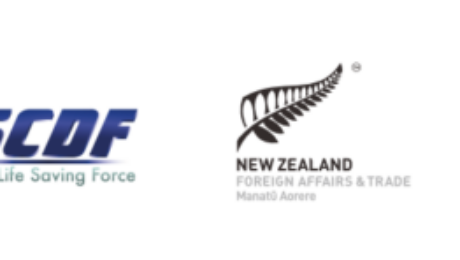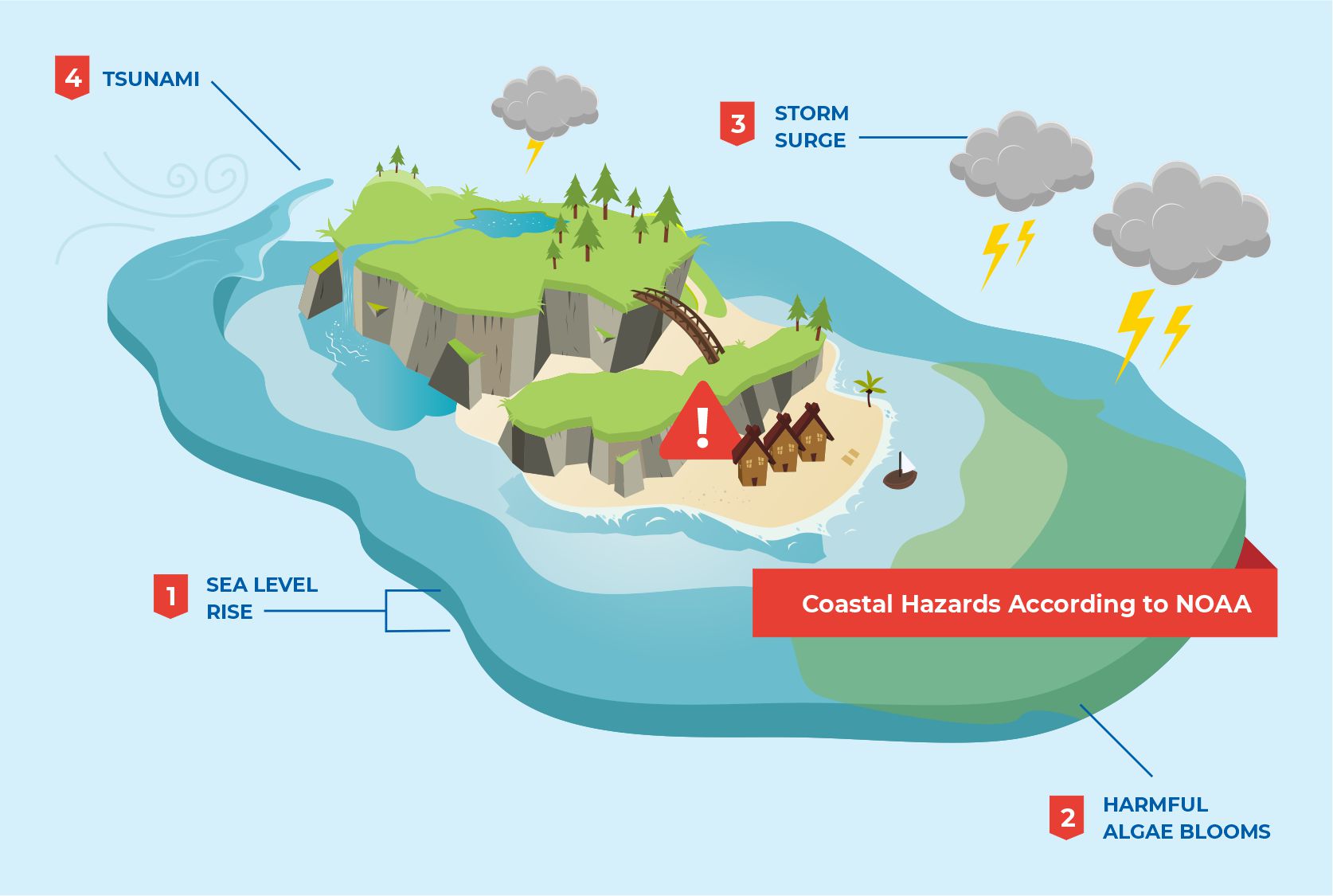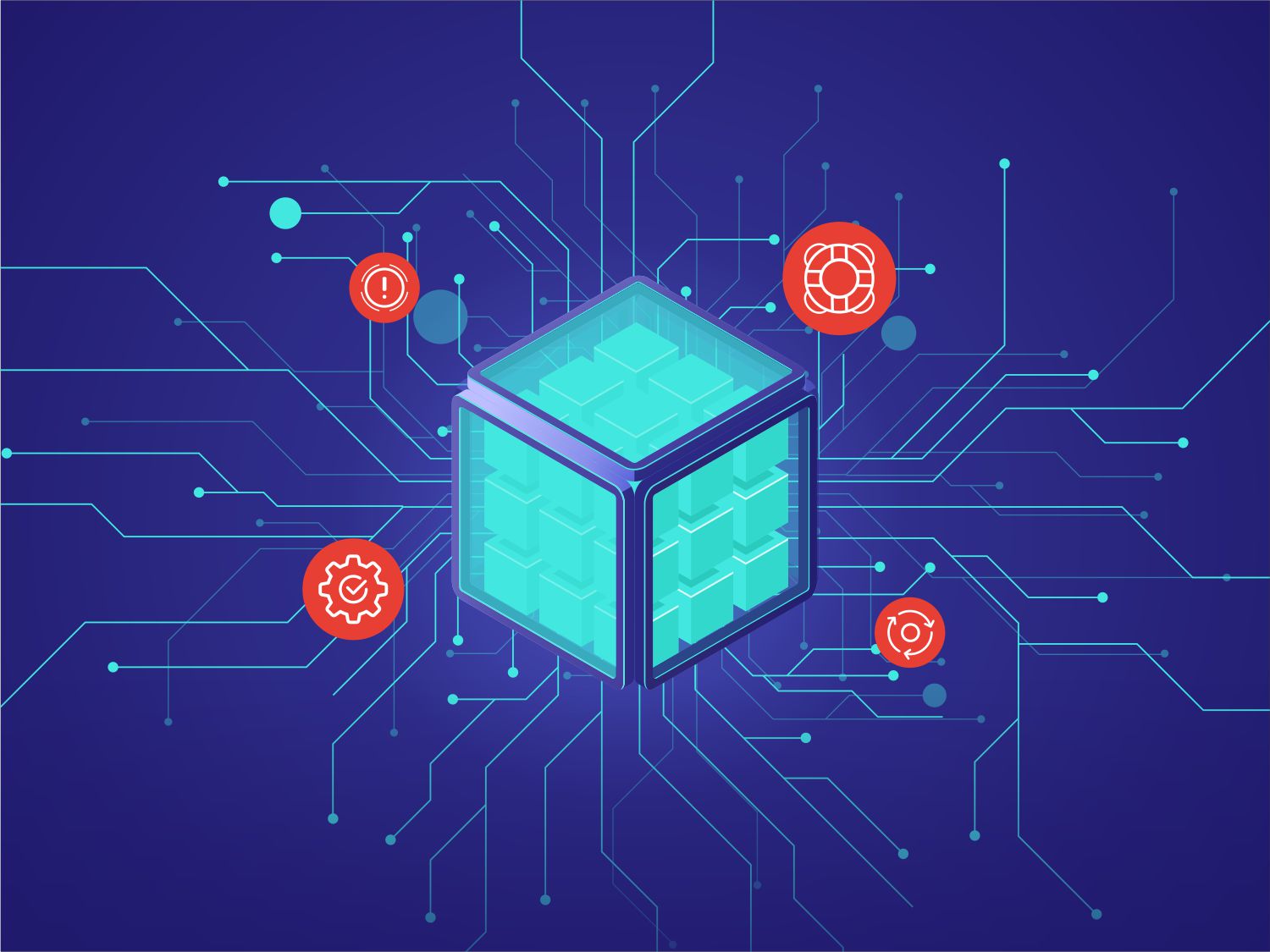Vol 86 – ASEAN WORKSHOP ON THE DEVELOPMENT OF THE CAPACITY BUILDING ROADMAP ON DISASTER MANAGEMENT

ASEAN WORKSHOP
ON THE DEVELOPMENT OF THE CAPACITY BUILDING ROADMAP ON DISASTER MANAGEMENT
Since the inception of the ASEAN Agreement on Disaster Management and Emergency Response (AADMER) in 2009, the ASEAN region has been dedicated to enhancing its disaster management capacity. This commitment was further demonstrated at the ASEAN Workshop on the Development of the Capacity Building Roadmap on 24-27 October 2023 in Singapore.
Hosted by the Singapore Civil Defence Force (SCDF), the event was attended by 20 (twenty) representatives from the ASEAN Member States (AMS), UNOCHA (United Nations Office for the Coordination of Humanitarian Affairs), IFRC (International Federation of Red Cross and Red Crescent Societies), and the AHA Centre, who gathered to develop preliminary Roadmap Strategies and define strategic pillars for ASEAN capacity building.
The Workshop opened with an overview of the Strengthening Institutional Capacity of AHA Centre Project (SICAP). This 2-year initiative implemented by the AHA Centre and supported by the New Zealand Ministry of Foreign Affairs and Trade (MFAT), aims to strengthen the institutional capacity of the AHA Centre, the ASEAN Secretariat, and the National Disaster Management Offices (NDMOs) of the AMS to enhance regional disaster management and emergency response coordination.
Participants were then stimulated with a visioning exercise, where they shared the visions and strategic directions of their respective countries and organisations, a step that proved crucial in aligning regional goals and strategies. This continued with a mapping exercise that listed the available training and capacity building initiatives undertaken in each country over the past five years, providing an overview of the region’s capabilities and needs. The day then ended with a visit the SCDF’s Civil Defence Academy (CDA), where they gained insight into the CDA’s simulation exercises as well as an overview of its capacity building strategies and techniques.
On Day 2 of the Workshop, Consultant for the SICAP project Management for Development Foundation (MDF) presented the main findings of the Impact Study on past capacity building efforts, that was then discussed in groups for feedback. As a follow up to this, on Day 3 participants brainstormed to identify the capacity building needs of ASEAN to build a resilient community.
The 4-day Workshop culminated in the identification and concurrence of four (4) strategic pillars that will shape the way forward for capacity building in ASEAN by participants. These include the enhancement of coordination for capacity building, enhanced access to knowledge and information, enhanced professionalism through standards, standardisation and (re-) certification, and individual and organisational impact of capacity building.
In his opening remarks, Mr. Krishna Putra Tanaja, Deputy Executive Director of the AHA Centre, emphasised the importance of drawing upon the knowledge and experiences of the AMS and stakeholders to map a strategic direction for ASEAN capacity building. “The support of the ASEAN Committee on Disaster Management (ACDM), along with our partners, has been instrumental in our progress,” he added.
The ASEAN Workshop on the Development of the Capacity Building Roadmap on Disaster Management will help make significant strides in advancing the ASEAN region’s disaster management capabilities. Through collaborative analysis and strategic planning, the workshop has laid down a comprehensive preliminary roadmap for enhancing ASEAN preparedness in the years to come. The Capacity Building Roadmap on Disaster Management is targeted to be completed by February 2024.

Written by: Gladys Respati | Photos by: AHA Centre
- Published in Insight
Vol 83 – WORLD ENVIRONMENT DAY 2023

WORLD ENVIRONMENT DAY 2023
Every year on June 5th, countries across the globe come together to commemorate World Environment Day (WEP). Lead by the United Nations Environment Programme (UNEP), this day is dedicated to celebrating the commitment of governments, private sector, and individuals in fostering a greener future.
This year, the spotlight is on plastic pollution. With the theme “Solutions to Plastic Pollution”, WEP 2023 dovetails with a significant concern in the ASEAN region in recent years – the prevalence of plastic waste and its implications for disaster management.
The ASEAN region is an epicentre of rapid economic growth and urbanisation. With progress, however, comes the heavy reliance on plastics, especially single-use varieties. This proliferation of plastic, added with an underdeveloped waste management infrastructure, has resulted in several ASEAN Member States being among the top contributors of mismanaged plastic waste.1
For ASEAN, the link between addressing plastic pollution and strengthening disaster management is clear and compelling. In urban settings, plastic debris may clog drainage systems, turning monsoon rains into devastating floods. This in turn may exacerbate the region’s vulnerability to disasters caused by natural hazards, particularly in member states like the Philippines and Vietnam, which are frequently hit by tropical cyclones. By mitigating plastic waste, the region can significantly reduce its susceptibility to flooding, particularly in urban areas.
Moreover, a cleaner environment ensures that post-disaster clean-up, rehabilitation, and recovery efforts are more streamlined. A landscape free from plastic waste ensures that natural buffers, like mangroves along coastlines, can thrive and protect coastal communities from storm surges.
The commemoration of World Environment Day in 2023 offers a reminder for ASEAN nations to not only highlight the region’s challenges but also to showcase its solutions. Several initiatives have sprouted across the region, emphasising recycling, waste management, and the promotion of eco-friendly alternatives to plastics.
In Vietnam, for example, the Law on Environmental Protection officially came into force in 2022, with the supplement of regulations on plastic waste reduction, recycling, reuse, and treatment.2 Meanwhile, Thailand’s ban on major single-use plastic items is another stride in the right direction.3
To beat plastic pollution and strengthen disaster resilience, the road ahead requires a collaborative approach. Leveraging World Environment Day, ASEAN can foster partnerships — within the region and globally — to share knowledge, resources, and best practices.
Through concerted efforts, regional collaboration, and the momentum of global platforms like World Environment Day, ASEAN is poised to turn the tide, championing a future where sustainability and resilience go hand in hand.
1Bosquet, B. (2023, June 4). Beyond borders: Collaborative solutions to plastic pollution in Southeast Asia. World Bank Blogs.
https://blogs.worldbank.org/eastasiapacific/beyond-borders-collaborative-solutions-plastic-pollution-southeast-asia
2VNA. (2022, September 7). Vietnam takes bold action to tackle plastic waste. VietnamPlus.
https://en.vietnamplus.vn/vietnam-takes-bold-action-to-tackle-plastic-waste/236919.vnp
3Thai PBS World. (2023, July 1). New phase of single-use plastic bag reduction to be launched on July 3rd. Thai PBS World.
https://www.thaipbsworld.com/new-phase-of-single-use-plastic-bag-reduction-to-be-launched-on-july-3rd/
Written by: Gladys Respati
- Published in Insight
Vol 80 – HYDRO-METEOROLOGICAL HAZARDS: ASEAN’S MOST FREQUENT NATURAL PHENOMENA

HYDRO-METEOROLOGICAL HAZARDS:
ASEAN’S MOST FREQUENT NATURAL PHENOMENA
Living in Southeast Asia, not a week goes by without hearing of an earthquake, flood, tornado, or other natural hazard occurring somewhere in the region. Natural hazards stem from sources ranging from geological, meteorological, hydrological to oceanic, among others. Sometimes, these hazards act in combination, resulting in the phenomena known as hydro-meteorological hazards.
The United Nations International Strategy for Disaster Reduction (UNISDR) defines hydro-meteorological hazards as “the process or phenomenon of atmospheric, hydrological, or oceanographic nature that may cause loss of life, injury or other health impacts, property damage, loss of livelihoods and services, social and economic disruption, or environmental damage”. They account for over 75% of damages related to disasters, including casualties, economic losses, infrastructure damage, and disruption to everyday life.
These types of hazards include tropical cyclones (typhoons and hurricanes), floods (and flash floods), drought, thunderstorms, coastal storm surges, and heatwaves. Hydro-meteorological hazards can also influence other risks such as landslides, wildfires, and epidemics.
The ASEAN region is especially prone to hydro-meteorological phenomena due to its geographic setting and climate. In 2021 alone, the ASEAN Disaster Information Network (ADINet) recorded that out of the 1,406 disasters that occurred in the ASEAN region, 99% were classified as hydro-meteorological in nature. One of the worst hydro-meteorological hazards to hit Southeast Asia in the last decade is Typhoon Haiyan (known as Yolanda in the Philippines), which struck on 8 November 2013. It is largely considered to be one of the strongest typhoons ever recorded in world history, with wind gusts reaching up to 320 km/hour. It affected over 16 million people, with 6,300 deaths, 1,000 missing persons, and 28,000 injuries recorded in the aftermath.
Though hydro-meteorological hazards have always been around, the ongoing effects of climate change are expected to exacerbate disasters associated with these hazards. Rising heat in the atmosphere and warmer ocean surface temperatures cause changes in weather patterns, disrupting the delicate balance of nature. Droughts become longer and more intense, affecting crop yields and the economies of farming communities. Meanwhile, tropical storms grow larger and fiercer, and rising sea levels erode coastlines, threatening the lives and livelihoods of coastal populations. Even densely populated urban communities are not exempt from the risks, as severe flooding can result in damage to infrastructure and financial loss.
Though the intensifying frequency and severity of hydro-meteorological hazards pose a threat to ASEAN countries, hydro-meteorological hazards can often be anticipated and monitored through weather forecasting, meaning that governments and communities have the chance to prepare, respond, and even evacuate accordingly. Having early warning systems in place can greatly increase the odds of survival and lessen the human and economic impact of hydro-meteorological hazards.
Adequate preparation and protective measures can be taken to prevent such hazards from turning into severe disasters. These include constructing typhoon-resistant structures and housing, improving infrastructures to better absorb and retain water during heavy rains or storms, planting mangroves along shorelines to protect coastal areas from storm surges and winds, and educating communities on how to respond during the event of a hazard, in order to prevent human casualties. Additionally, governments, the private sector, and the public must all actively participate in climate change mitigation to limit global warming and reduce its effects on the climate.
At the end of the day, learning and adapting to live alongside the natural hazards will be the key to developing ASEAN into a robust and resilient region.
Sources:
• https://www.unisdr.org/files/7817_UNISDRTerminologyEnglish.pdf
• https://core.ac.uk/download/pdf/82732768.pdf
• AHA Centre, Disaster by the Numbers 2021
• https://ahacentre.org/wp-content/uploads/2016/12/WeatheringThePerfectStormSecondEdition.compressed.pdf
• https://www.usgs.gov/faqs/what-are-some-signs-climate-change
Written by: Gladys Respati
- Published in Insight
Vol 78 – WASTE MANAGEMENT DURING DISASTERS

WASTE MANAGEMENT
DURING DISASTERS
When saving lives during disasters, transporting food and water takes center stage, but managing and disposing of waste is equally important. If not given proper attention, solid and liquid waste can fast become a health hazard in affected communities. With the chaos that comes after emergencies, it is critical that waste be disposed of safely and properly.
When typhoons, earthquakes and other natural disasters occur, a lot of waste is already generated. We often see fallen trees, boulders and mud blocking roads, in addition to rubble from man-made structures like houses and buildings. Clearing operations often take place to ensure that roads are passable and safe for rescue teams and the delivery of much-needed supplies. In addition to the debris, waste generated from food packaging can pile up fast especially in evacuation centres.
SOME MATERIALS THAT MAY BE CLASSIFIED AS SOLID WASTE AFTER NATURAL DISASTERS HAVE OCCURRED:
1. Fallen trees, tree trunks, branches, palm leaves
2. Rubble and debris from damaged infrastructure such as steel, concrete, wood and bricks
3. Mud, ash, rocks
4. Electric lines, poles and cables
5. Garbage from food and water such as plastic water bottles, packaging and leftover food
If there is no existing waste-disposal site, a temporary area that is safe and far away from evacuation sites and human settlements should be designated for the piling of solid waste. Communal pits can also serve this purpose. Rubble and debris can be sorted, some of it can still be used, such as metal sheeting and wood.
When selecting the type of vehicle to be used to transport solid waste, things like generation rates and densities need to be considered. Routes are also important along with the distance between collection and disposal areas or dumping sites, be they temporary or permanent.
Local people also play an important role in managing waste in emergencies. Victims of natural disasters can help in keeping their own environment safe and sanitary. They can engage in clean-up operations, as focusing on tasks is one way of dealing with the trauma that natural disasters often inflict on people. This can also boost morale as they are directly engaged in improving their homes and communities.
Proper waste management can help keep away flies, dogs, snakes and other scavengers that have the potential to spread disease. Used medical supplies like syringes should also be disposed of properly.
SOME OF THE RISKS THAT CAN ARISE FROM DISASTER WASTE ARE:
1. Nuisance from the stench from decomposing waste materials
2. Disease and bacterial infection from animals and vermin that scavenge through garbage piles
3. Direct contact with hazardous chemicals such as pesticides and acids
4. Cuts, scratches and abrasions from sharp objects
Sources:
https://www.unocha.org/sites/unocha/files/DWMG.pdf
https://www.who.int/water_sanitation_health/hygiene/emergencies/solidwaste.pdf
Written by : Judith Garcia Meese
- Published in Insight
Vol 76 – LET’S GET HACKING

LET’S GET HACKING
A major component of the Humanitarian and Emergency Logistics Innovation Expo (HELiX) 2021 is the upcoming AHAckathon competition. This competition, a hackathon (big clue in the name), is an exciting new concept for the AHA Centre and has been launched as an effort to engage more students, young people and professionals in the process of producing innovations to support humanitarian logistics and supply-chain management for the ASEAN region. But what exactly is a hackathon?
The word hackathon itself is a portmanteau of “hacking” and “marathon”, and as such is a race in which software developers, programmers, interface designers, project managers and others collaborate in developing a programme or software. The participating teams are normally given a deadline, often 48 hours, to work on the software at a marathon-like work pace. The competition is not limited only to programmers or those with coding expertise, but also to project managers or designers, as the team has to work on developing a solution to questions provided for a certain theme.
The general concept is that each team will be provided with the theme and set of questions for them to work together in developing software that can help to solve the problems. Hackathon competitions have become widely popular since the mid to late 2000s as a tool for companies and venture capitalists to develop software technologies in a short time and then promote them for potential funding.
Nowadays, the competitions are no longer limited to the commercial and private sector but also other sectors such as government and humanitarian agencies. The hackathon is a venue for all sectors to promote innovation and gather solutions, specifically from students and young people, who are normally the main target participants of the competition.
The AHAckathon is being staged by the AHA Centre as part of HELIX 2021, in partnership with the Viet Nam Disaster Management Authority (VNDMA) and in cooperation with HELP Logistics, Impact Week and LaunchLabs. The event is supported by the Government of Japan through the Japan-ASEAN Integration Fund (JAIF).
AHAckathon participants have to propose software or application-based solutions to identified problems in humanitarian logistics. The teams will have 48 hours to work and finish the software or application. Representatives of the ASEAN Member States and from universities and other humanitarian partners will serve as judges of the competition.
THE TEAMS ARE EXPECTED TO PROVIDE AN APPLICATION-BASED SOLUTION TO ANY OR A COMBINATION OF THE FOLLOWING PROBLEMS:
How can humanitarian needs be quickly identified or estimated?
How can relief assistance be distributed more quickly, be better tracked and their receipt reported efficiently?
How can affected communities be better informed about assistance and provide feedback?
How can customs, immigration and quarantine protocols be processed more quickly?
How can decision-makers be better informed about the needs, progress and feedback from the response?
The purpose of the AHAckathon is to promote innovative solutions and collaboration to support the improvement of humanitarian logistics for the ASEAN Member States and humanitarian communities in the ASEAN region. It is hoped that the competition will trigger more creative ideas to solve the problems identified in relation to many components of the humanitarian logistics and supply-chain management process in the region.
Through the AHAckathon, the AHA Centre and our partners also want to promote collaboration between the commercial and non-commercial sectors. The competition will provide an opportunity for hackers, programmers and project managers across the globe to work together. While in return, they will have an opportunity to get coaching from experienced start-up entrepreneurs and design thinking experts, as well as exposure to potential investors.
The competition is open to students, amateurs and professionals. As we believe a complex problem requires a collaborative effort, individuals and teams may come from different disciplines to work together to unpack the problems and provide solutions. The competition will be conducted virtually from 8-10 October, 2021.
Written by : Caroline Widagdo
- Published in Insight
Vol 75 – A JOURNEY OF THE COLUMN: IT’S MORE THAN JUST A NEWSLETTER

A JOURNEY OF THE COLUMN:
IT’S MORE THAN JUST A NEWSLETTER
I have had the great privilege of serving as Editor in Chief of The Column since December 2016 and as this edition, Volume 75, marks the end of my tenure, I would like to reflect on The Column’s journey thus far.
The Column was first published in January 2015 under the stewardship of Mr Said Faisal, who led the AHA Centre as Executive Director. At that time, the AHA Centre needed to have a platform that could regularly update and inform partners about all issues relating to disaster management and humanitarian assistance in the ASEAN region, as well as a channel to communicate to the public about the activities of the AHA Centre.
I was pleased to take over as Editor in Chief for the 24th edition and although The Column was fulfilling its initial role, I felt that there was much more that could be achieved in order to get our important message across to a wider audience. The most obvious transformation was in the visual design – to make it more attractive, and most importantly to publish The Column in a web-version format. This was achieved with Volume 36 in March 2018 and it allowed readers to access The Column from their computers or cellphones. The public could also now subscribe to receive the monthly newsletter via email.
On top of that, I sought to ensure that we had a more diverse range of contributors, from AHA Centre staff and other experts and partners to academics and the AHA Centre Executive (ACE) Programme graduates. The Other Side section of The Column also regularly features profiles of people from various backgrounds who have shared the “other side” of their public persona. In the past few editions, the Other Side has featured ACE Programme alumni from all 10 ASEAN Member States.
The Column has become an important channel for the AHA Centre to communicate with stakeholders, partners and the general public about the vitally important role the Centre plays in disaster management and humanitarian issues in the region. As a knowledge product, The Column also provides the opportunity for AHA Centre staff, partners, academics and experts to contribute to the expansion of information on all matters relating to its work.
It has been six years since the first edition of The Column was released, and many activities and a great deal of information have been captured in its pages. As Editor in Chief, I have been a witness to what has been going on in the AHA Centre and in the region through its many informative articles.
As I prepare to leave the Centre this month, I feel emotional about also leaving The Column, where over the years I have got in touch with so many dedicated individuals, both professionals and volunteers, in formal meetings, informal gatherings and through social media. We could not have achieved what we have without their efforts and I would like to take the opportunity to thank them. I would also like to express my sincerest gratitude for the support provided by the Japan-ASEAN Integration Fund (JAIF) and EU-SAHA to The Column.
I hope, indeed I am sure, that The Column will continue to inform the AHA Centre’s partners and the wider public about all disaster-management and humanitarian issues in the region. I wish it and the team every success in the future.
Written by : Ms Adelina Kamal
- Published in Insight
Vol 73 – ESTONIAN RESCUE BOARD (ERB) – THE TURBULENT YEAR OF 2020

ESTONIAN RESCUE BOARD (ERB)
THE TURBULENT YEAR OF 2020
Although the Estonian Rescue Board (ERB) has not been the lead body during the COVID-19 pandemic, it nevertheless has played an important role in the crisis. On 12 March, 2020 the government of Estonia declared an emergency situation for the whole territory of Estonia. For those of us in the ERB this meant that we had to switch from our regular working regime to a staff regime in which we reduced drastically the services that we provide (e.g. prevention, fire supervision etc).
The main task for us was to secure business continuity in our field, meaning responding to incidents and supporting the local government authorities across the country in coping with the crisis and coordinating the information exchange between different local and state authorities. This may sound like a simple task but it was not, because as in any crisis, being on top of the information flow is one of the greatest challenges. The main reason why the ERB was given that task was due to its expertise in the crisis-coordination field. Although the emergency situation ended on 1 May 2020, our role of being the main crisis partner for local authorities and our continuous support for the Estonian Health Board in resolving the crisis is still ongoing. Another important role was to deliver face masks and disinfectant all over the country. The ERB has a good network of professional and voluntary fire stations throughout Estonia, and that was the main reason it was used to reach as wide a range of people as possible. In addition we helped the police and border guard board with our drones to prevent mass gatherings and transmission of the virus.
As mentioned above, one of the tasks for the ERB was the maintenance of business continuity. In order to achieve that, we worked out different solutions for our first responders. As we were in a pandemic that mainly spread through contact, it was important to work out how to reduce such contact. We tried to maintain every fire station as a bubble, and within each fire station every shift also. So, the changing of shifts in stations was made contactless. We tried to avoid moving firefighters between stations as we did previously in order to maintain a lifesaving number of personnel in a station. All in all, this was more costly initially, but kept the spread of the virus under control and we had no case of an entire fire station being closed for more than 24 hours/one shift as a result of having a shift in quarantine for being in contact with a COVID-positive individual. Of course, all of this was done hand-in-hand with the conventional measures of using face masks, disinfectants etc.
Estonia has a relatively small population and low population density and this in combination with a reasonably good COVID-19 testing system meant that test results were available in less than 24 hours, sometimes even 12 hours, and we could respond to the positive test result quickly and isolate any close contacts. First responders received video instruction on how to use protective equipment and how to safely dispose of it when attending incidents such as car accidents.
Estonia has a quite low natural-hazards risk, limited mostly to occasional flooding and forest fires. The year 2020 was record-breaking for the ERB in a positive sense in many ways: the number of building, dwelling, forest and landscape fires was the lowest since Estonia regained its independence. The number of casualties in fires was also the lowest since 1991. No major forest fires were reported last year in Estonia. There were not even any European Civil Protection Mechanism activations on forest fires within the whole of Europe last year.
As Estonia was the scene of fierce fighting during the Second World War, one of our challenges each year is the recovery of war relics such as unexploded ordnance. In 2020, a record-breaking 9,041 explosive devices were defused. The main reason for this is probably that the winter and spring of 2020 were warm and more people spent time in nature because of COVID-19 restrictions and many discoveries were made by people by walking in the forests.
In 2020 the work of the ERB was greatly transformed by COVID-19. Cooperation with partners from different countries also suffered due to the pandemic. Many trips and meetings were postponed and several had to be cancelled. Luckily, several employees could still participate in international cooperation events to develop partnerships, learn something new and help people in need. At the end of the year, Sudan suffered from a refugee crisis, when thousands of refugees arrived daily from Ethiopia fleeing a military conflict there. The United Nations High Commissioner for Refugees (UNHCR) asked the International Humanitarian Partnership (IHP) network for support in creating housing and working conditions for the people involved in solving the crisis. Estonia contributed with a base camp technician during the period of 19 December 2020 to 23 January 2021. The challenges included travel restrictions and spending a compulsory 14 days in isolation in Khartoum, before advancing to relief operations. All in all it took more time with the restrictions, but that is the new reality!
Written by : Toomas Kääparin / Photo Credit: ERB
- Published in Insight
Vol 65 – DISASTERS DURING A PANDEMIC: ARE COUNTRIES MORE WILLING TO ACCEPT INTERNATIONAL AID?

DISASTERS DURING A PANDEMIC:
ARE COUNTRIES MORE WILLING TO ACCEPT INTERNATIONAL AID?
This month’s Insight article comes from the AHA Centre’s own Deputy Executive Director, Arnel Capili.
What if another major earthquake triggers a tsunami somewhere along the vast coastline of Indonesia? Or a super typhoon devastates one of the many islands of the Philippines? Would these countries, or other vulnerable nations in Southeast Asia, be more willing to accept international assistance in light of the pandemic?
Before the current pandemic, we saw a shift in some of the region’s countries’ policy to implement nationally-led disaster responses – with any support from the international community based on specific priorities. This was true during the Central Sulawesi earthquake in 2018, where the Government of Indonesia clearly manifested that the response was local, and that any offers of international assistance should be in-line with identified gaps, and channeled through local partners (such as the local Red Cross, local NGOs, and local government).
This tendency of governments to temper overwhelming “love and support” can be traced back from their experience of having a secondary disaster — a ‘tsunami’ of unsolicited assistance after the 2004 Banda Aceh tsunami, and super typhoon “Haiyan” (2013). The assumption is that the donations and support teams posed increased challenges for the governments of Indonesia and the Philippines, so much so that it eclipsed the well-intentioned purpose.
So then, are countries in the region more willing to accept offers of international assistance during a disaster in the middle of COVID-19 pandemic? Let us examine possible scenarios to provide some insights, and initiate conversations about how to plan responses to natural disasters in light of the pandemic.
In the short term, countries in the region will probably remain steadfast with their preference for a more nationally-led response. Understanding that most countries in the region have very strict restrictions on movement – particularly from ‘foreigners’ who are potential carriers of the virus – cash or remote technical support will be preferred. Durable goods may be accepted on the basis of diplomatic relations. For political considerations, offers from ‘friendly’ countries may be accepted to maintain good relationships, as well as in the interest of reciprocity. Regional organisations such as ASEAN may be accorded more space to reduce international humanitarian footprint.
In the longer-term, and if the threat of the pandemic persists, there is a potential for countries in the region to reconsider this position. The policy shift will stem from the fact that government resources – including its frontline services – may be exhausted. With an economic downturn and the mounting pressure to support communities, governments may be more flexible to accept international assistance. Although still considered to be a national response, governments may extend greater flexibility allowing exemptions and greater access to the international humanitarian community.
Regardless, national authorities will carefully weigh-in on issues related to national capacity and domestic politics. For a country reeling from the effects of COVID-19, food and durable goods such as mobile storage units, health and hygiene kits, and the required logistics to move them will be prioritised. Planning and anticipation are key for issues surrounding entry and quarantine requirements, certifications of compliance to national standards for medical teams and their equipment, and special handling requirements for relief items (disinfecting at port of entry for example).
One thing is undeniable – disasters during this pandemic will redefine how we do things. It will challenge how we think about humanitarian action, not just during the pandemic, but also how this model of response can be adapted post-pandemic. The difficulties faced during the pandemic have shown us that there are other ways to provide support aside from being on the ground, and that being first to assist is not necessarily a priority. Rather, it is more a profound need for greater thinking of how the international humanitarian community could enhance and add greater value to a nationally-led response.
Written by : Arnel Capili | Photo: AHA Centre
- Published in Insight
Vol 63 – POTENTIAL COASTAL HAZARDS IN THE REGION

POTENTIAL COASTAL HAZARDS IN THE REGION
According to the U.S. National Oceanic and Atmospheric Administration (NOAA), many of the world’s populations live in coastal regions. While idealistic for many, these regions still have a downside, which is that they are prone to an array of natural hazards.
Closer to home, Southeast Asia is one of the world’s most at-risk regions to the impacts and dangers caused by coastal hazards. Many areas of the Southeast Asia region are archipelagos, located between two large bodies of the Pacific and the Indian Oceans. Therefore, these nations are among those most vulnerable to coastal hazards, including rising sea levels, tsunamis, erosion and tidal flooding. Additionally, coastal hazards are closely linked to the impacts of climate change – particularly the issue of rising sea levels – that increasingly endanger human populations, cities, and ports across the region. Indonesia, Malaysia, the Philippines, Singapore, and Thailand are examples of ASEAN countries who are vulnerable to coastal hazards, and are all home to large cities located in close proximity to the coastline.
There are four major coastal hazards as identified by NOAA, namely: rising sea levels, harmful algae blooms, storm surges and tsunamis. Rising sea levels are the largest potential hazard faced by coastal communities, overly due to the onset of climate change. Harmful Algae Blooms (HABs) occur when colonies of algae grow out of control, having toxic or harmful effects on people, fish, marine mammals, and birds. Storm surges take place through abnormal rises in sea levels during a large storm, that are measured at the height of water above the normal predicted astronomical tide. The last primary hazard are tsunamis, as most ASEAN nations lie in the Ring of Fire, that is home to constant earthquakes that cause the large tsunami waves.
Based on these interrelated and challenging contexts, it is therefore critical to develop resilient communities who are prepared for these threats, as well as enhance the ability of those communities to absorb impacts and bounce back should disaster strike. With strong preparation – supported by clear response mechanisms – ASEAN communities will continue to overcome and manage risks related to coastal hazards across the region.
Written by : Moch Syifa | Source: oceanservice.noaa.gov
- Published in Insight
Vol 62 – ALTERNATIVE DATA FOR DISASTER MANAGEMENT AND LESSONS FROM COVID-19 RESPONSE

ALTERNATIVE DATA
FOR DISASTER MANAGEMENT AND LESSONS FROM COVID-19 RESPONSE
During June 2020 an online discussion with over 60 participants from government to the private sector, academia, media and other development partners, was convened to explore alternative data for disaster management, with a focus on Indonesia’s COVID-19 response. The discussion was implemented by Saraswati – a private Indonesian firm focused on innovations in the development sector – in collaboration with SIAP SIAGA, a disaster risk management programme funded by the Australian Department of Foreign Affairs and Trade.
Some interesting and innovative examples of alternative data were raised as examples during the discussion – examples which could potentially be replicated and/or expanded for current or future disaster management contexts. Indonesian firm Iykra – for example –established a data network using data from Google and Flight Radar to provide analysis on mobility and early potential rates of infection. Google mobility data allowed them to develop data visualisations as an alternative source on community movement before and after large-scale social movement restrictions were implemented by the Indonesian government.
In another example, Pulse Lab Jakarta (PLJ) explored mobility patterns using data based on agreements negotiated with telecommunications providers. Such mapping was undertaken during and after natural disasters – for example following the 2018 Central Sulawesi earthquake and tsunami in Indonesia – to support insights on disaster response for multiple parties. PLJ has undertaken such work again to support the Indonesian government during this pandemic, particularly by visualising COVID-19 data from each Indonesian province for easier analysis and response.
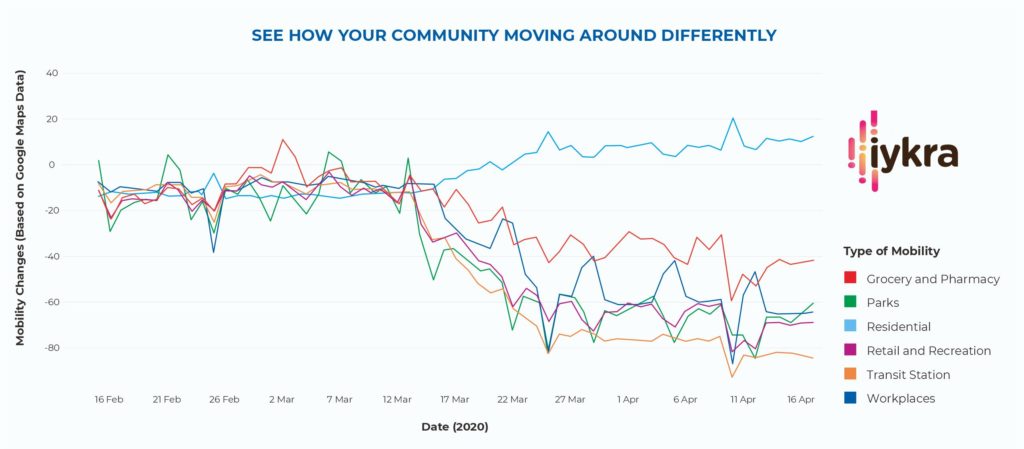
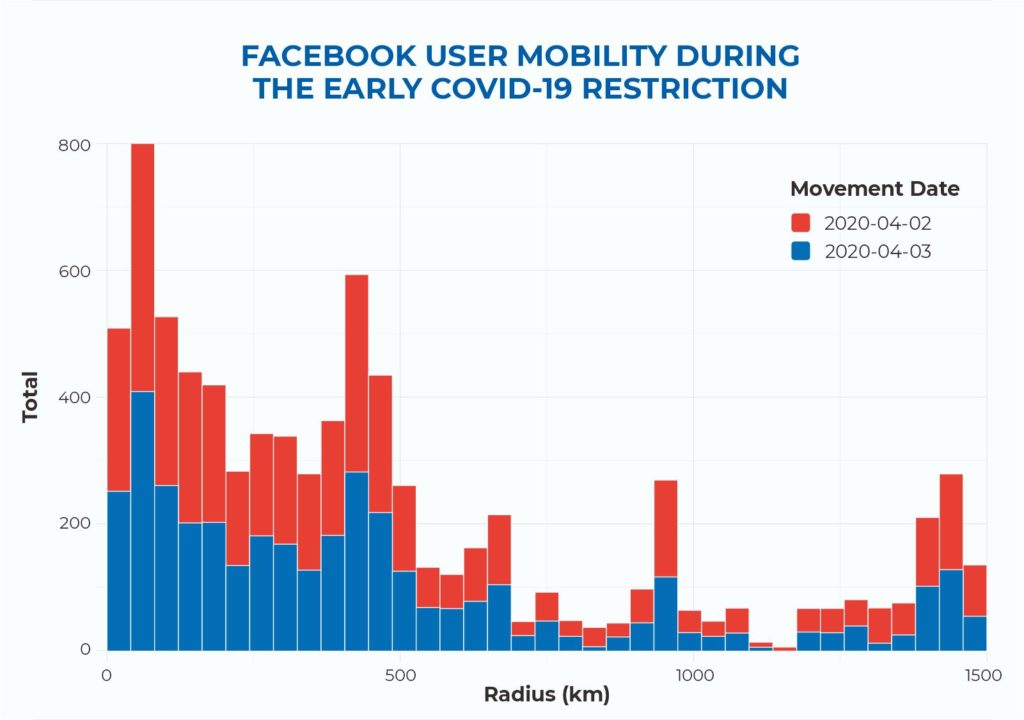
Examples and innovations such as these form a large part of the AHA Centre’s ICT Roadmap, as well as the organisation’s overall push for increasing information and communication technology advances at the front and centre of ASEAN disaster management. While there is still much to be determined, even the small portion of ICT currently being utilised by disaster managers is having a significant impact. Alternative data not only provides new and unique insights, but also supports governments and other disaster management stakeholders to overcome data management challenges – particularly in relation to speed and infrastructure access required to gather traditional data within emergency situations. With proper understanding and utilisation, alternative data could form an integral part of disaster management processes, and support the development of policies, processes and activities through all parts of the disaster management cycle.
Written by : William Shea | Source : Saraswati Development Innovation
- Published in Insight

